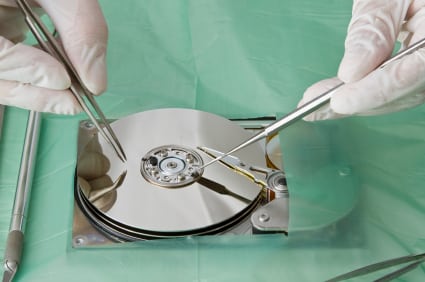 Every health provider has their own level of tolerance for recovery time. Some will profit from making periodic backups of their servers on the cloud. Others need continuous coverage.
Every health provider has their own level of tolerance for recovery time. Some will profit from making periodic backups of their servers on the cloud. Others need continuous coverage.
The coverage plan you want depends upon the cost of losing IT functionality.
For some businesses, the choice is easy. We have a client in manufacturing, and it costs them hundreds of thousands of dollars per hour of inoperability. They can never afford to lose Internet access, so they have three Internet Service Providers: one T1, one cable, and one fiber.
They also have their own power generator and multiple phone line carriers to ensure continuous communication. If anything threatens to interrupt their service, then the director of IT is immediately on the phone with us. He has a high level of urgency because he knows how much money his company stands to lose.
So what does it cost you for your IT operations to go down? The value gives you a sense of how much IT recovery is worth. Then, you can choose the plan that makes the most sense.
You pay to reduce recovery time, incrementally. When the cost of downtime becomes large enough, your company should purchase a continuous data-protection plan. The main feature of continuous protection is simple: no matter what occurs, you know your data services will continue to function.
Continuous data-protection captures every change on your network, both on-premise and in the cloud. An image of the network is stored off-site and updated continuously. If you have a file that was accidentally deleted, it can be recovered instantaneously. That happens on both a file level and on an imaging level.
Every business needs to ask itself, what is the cost and value of creating a continuous business model, and does the cost justify that value?
Call our business managed IT services department directly at (404) 777-0147 or simply fill out this form and we will get in touch with you to set up a getting-to-know-you introductory phone call.
Fill in our quick form
We'll schedule an introductory phone call
We'll take the time to listen and plan the next steps
11285 Elkins Rd Suite E1, Roswell, GA 30076
© Copyright 2024 Centerpoint IT. All Rights Reserved. Website in partnership with Tech Pro Marketing. | Privacy Policy
Get Immediate Help For All Your Technology Issues (404) 777-0147

If you want our team at Centerpoint IT to help you with all or any part of your business IT, cybersecurity, or telephone services, just book a call.
Fill in your information below to get started today.
"*" indicates required fields
Fill in your information below to schedule now.
"*" indicates required fields
Before your organization commits to 1, 2, 3 or even longer managed IT services contract, understand what you’re getting. Centerpoint IT gives you the facts in our Managed IT Services Buyer’s Guide.
Enter your information below and we’ll send it over.
"*" indicates required fields

We are turning 15 and want to celebrate this milestone with you because without you this would not have been possible. Throughout this year look for special promotions on services and tools aimed at Making IT Simple for You so you can focus on your business.

We are turning 15 and want to celebrate this milestone with you because without you this would not have been possible. Throughout this year look for special promotions on services and tools aimed at Making IT Simple for You so you can focus on your business.
https://calendly.com/centerpoint-it/discovery-call